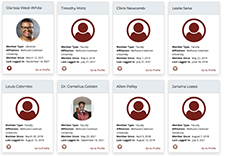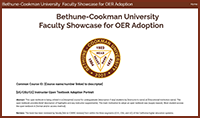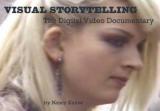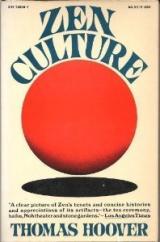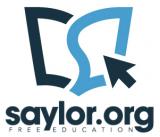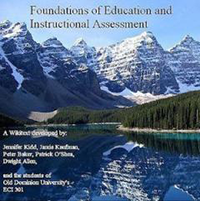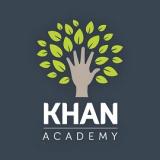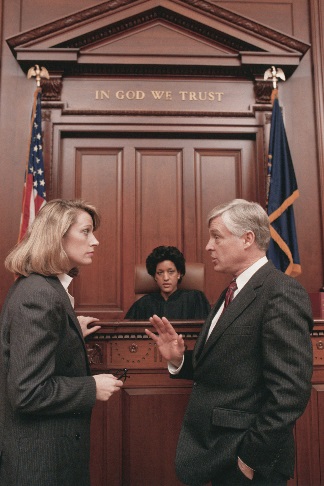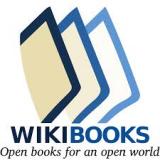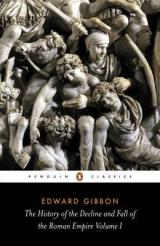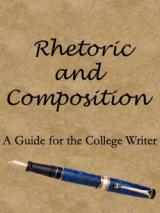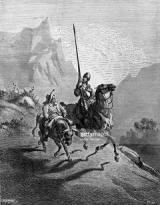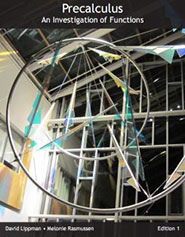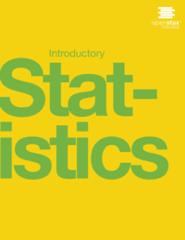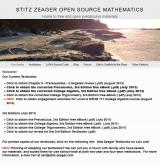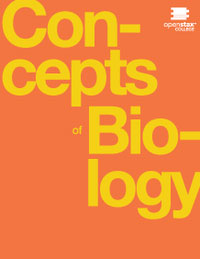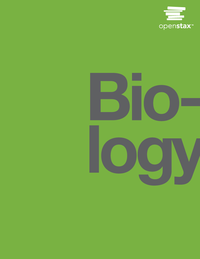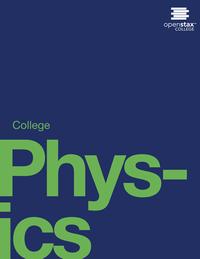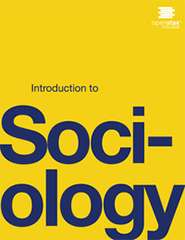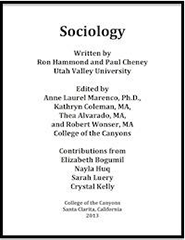
Faculty Showcase
Over 50 Bethune-Cookman faculty have joined the MERLOT community as the first step in showcasing how they are using free and open educational resources in their courses.
- Explore who at BCU is participating in MERLOT
- You can join MERLOT too! It's FREE and EASY!
When you are ready to showcase how you have adopted free and open educational resources in your courses, BCU has a custom template for you to tell your story. Get started by asking Clarissa West-White to send you a copy of the Faculty Showcase Template to your MERLOT account.
Faculty from Other Institutions
 Arts
Arts
Susan Abbey, MFA from Humboldt State University
eTextbook: Visual Storytelling: The Digital Video Documentary, by N. Kalow

Course Description:
Universal and archetypal principles of story with an emphasis on using images and words for creating stories for film and theatre.
Quote
"In an informal discussion with the class, the students concurred the text was extremely valuable as a tool for their Video Documentary Team Project."
Kristin Ellsworth, Ph.D. from California State University, Dominguez Hills
eTextbook: Zen Culture by T. Hoover

Course Description:
A study of the visual arts of China, Korea, and Japan. Asian Art is organized around the study of different materials used in the creation of art in Asia, many of which are unique to the area.
Quote
"My main motivation for choosing the open access source was to save students money."
 Business
Business
Abbas P. Grammy, Ph.D. from California State University, Bakersfield
eTextbook: Principles of Economics from OpenStax College

Course Description:
Introduction to economic analysis. Topics covered include microeconomic theory and application and macroeconomic theory and policy. Also, an in-depth study of into selected topics and current events.
Quote
"Because most of my students come from low-income families, I wanted to help save them money on the textbook. My department chair recommended the textbook to me. The faculty at my institution are adopting a policy of using e-textbooks in introductory and principles of economics courses."
Daniel MacDonald, Ph.D. from California State University, San Bernardino
eTextbook: Principles of Microeconomics by OpenStax College

Course Description:
Introduction to the economic principles which govern production, exchange, the pricing of goods, services and resources and the distribution of incomes in competitive and noncompetitive markets.
Quote
"There is no doubt that the new textbook has raised student interest in the material and provided them with a more reliable reference point. Instead of buying earlier editions of proprietary textbooks that might be outdated or have inadequate contemporary examples, students get a high-quality learning resource."
Brian Evans from Foothill College, CA
eTextbook: Principles of Microeconomics by OpenStax College

Course Description:
Micro-analysis of economic life. Allocation of resources. Consumer behavior. Pricing and output decisions. Distribution of wealth and income. Nature and characteristics of business enterprises. International trade. Comparative economic systems. ECON 1A and ECON 1B may be taken in either order.
Quote
"Any resource that lowers barriers to access for students is good. I use my own online homework sets and tests but am continually looking out for new free resources. This quarter I found some excellent youtube videos that I have incorporated."
Craig Kerr, Ph.D. from California State Polytechnic University at Pomona
eTextbook: Principles of Microeconomics from OpenStax College

Course Description:
Introduction to microeconomics. How an economic system works to solve the problems of choice among alternative allocations, utilizations, and distributions of resources. Applications of economic principles to domestic and international economic problems.
Quote
"The main motivation for adoption was to undermine the textbook industry's ability to charge over $200 for "updated" books that are no different in theoretical content than they were in their first edition. A secondary consideration was the e-book format with hyperlinks to additional information."
Matthew J. Holian from San Jose State University, CA
eTextbook: Principles of Microeconomics by Rittenberg and Tregarthen
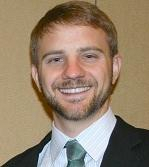
Course Description:
Allocation of resources and distribution of income as affected by the workings of the price system and by government policies. Notes: May be taken concurrently or prior to Econ 1A. Meets the general education requirement for social science – human behavior, Area D-1.
Quote
"A major motivation for me was certainly the desire to save students money. However I also want to make the material easy to access, for example, by sending students PDF documents, or by copying and pasting sections of the text into emails and so on. So it is not just that the books are free but they are also easy to access."
David Olson, Ph.D. from California State University, Bakersfield
eTextbook: International Business: Opportunities and Challenges in a Flattening World from Saylor.org

Course Description:
An examination of contemporary issues related to managerial training, political structure, and foreign receptivity to United States business, cultural factors, organizing, and controlling the international firm.
Quote
"This text provides good coverage of the material and is easily accessed for all students with a laptop or smartphone. The material is available in pdf and can be downloaded so students have access at all times."
Mary Totton, Ph.D. from California State University, Sacramento
eTextbook: Two Chapters from Boundless Marketing
Course Description:
The purpose of the course is for students to understand the social and economic implications of marketing for profit and nonprofit institutions; market structure and behavior; marketing institutions; channels of distribution for consumer and industrial goods; marketing costs; pricing; and public relations.
Quote
"The main motivation for adopting these two chapters of the open textbook is to provide students with quality and updated marketing education with low to no additional costs."
 Education
Education
Trudy Naman from Santa Ana College, CA
eTextbook: Foundations of Education and Instructional Assessment by faculty and students at Old Dominion University

Course Description:
Introduction to the field of education including historical and philosophical perspectives; school governance and funding; societal influences and student diversity; school curriculum standards; professional standards and teaching performance expectations. Students will independently complete a minimum of 45 hours of Service Learning (structured observation and internship/fieldwork) in local public elementary school classrooms during the semester.
Quote
"When I assign students multiple open educational resources to read about a topic, they are expected to take more ownership for their learning. They will need to think critically about the different perspectives and synthesize their understanding for sharing during class discussions and online postings."
 Humanities
Humanities
Beverly K. Grindstaff, Ph.D. from San Jose State University
Book: Smart History from Khan Academy
Course Description:
This course presents a thematic and chronological examination of major historical trends of graphic design and its reception. It uses the slide lecture format to contextualize main historical, technological, and theoretical concerns that influenced individuals and movements in graphic design.
Quote
"The main motivation in participating in this study and partially adopting an open textbook is to help ensure that any adaptation of OER materials is pedagogically sound and in the best overall interest of students (i.e., advantages must include more than the fact that materials are free)."
Leslie Collins, M.A. from Modesto Junior College
eTextbook: A Primer on Communication Studies
Course Description:
A survey of the discipline of Communication Studies with emphasis on interpersonal contexts, group discussions, and individual presentations in public settings. This course explores issues relevant to the systematic inquiry and pursuit of knowledge about human communication including its history, principles, processes, assumptions, methods, and specializations of human communication as an academic field of study.
Quote
"I have transitioned to free OER textbooks for two of my other courses, and students report (in end-of-semester course review surveys) being thoroughly pleased with the value of those books."
Scott T. Paynton, Ph.D. from California State University, Humboldt
eTextbook: Survey of Communication Study by L. Hahn and S. Payton in Wikibooks

Course Description:
Perceptual effects, verbal/nonverbal codes, and dynamics of interpersonal, group, and organizational communication.
Quote
"My co-authors and I wrote our own and decided to make it open source and free for students. Our motivation was to provide students with free materials that can be updated on a regular basis by a broad range of people in our discipline, thus making the text constantly current."
Stephen W. Campbell, Ph.D. from California Polytechnic University, Pomona
eTextbook: U.S. History from OpenStax College
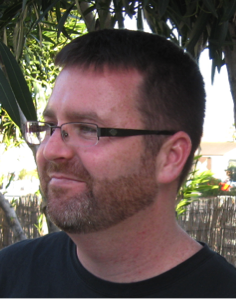
Course Description:
History of the United States from the end of Reconstruction (1877) to the present. Ethnic and gender diversity and the democratization of the United States. Emphasis on the political, social, cultural and economic trends and events that have shaped and characterized the United States as a modern nation and world power.
Quote
"I also wanted to save money for my students, which is important since, as a whole, they are highly indebted upon finishing their degrees."
P. Scott Corbett from Ventura College and California State University, Channel Islands
eTextbook: U.S. History from OpenStax College
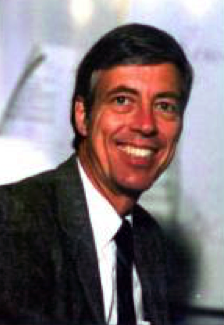
Course Description:
This course presents a survey of the significant personalities, groups, ideas, events, institutions and trends contributing to the pluralistic American heritage from the Colonial period through the Reconstruction.
Quote
"My main motivation was to save students money and to give them a quality textbook that they could access electronically."
Sarah Mergel from Dalton State College, GA
eTextbook: History in the Making: U.S History through 1877 by University Press of Northern Georgia

Course Description:
Surveys the history of colonial America and the United States from the first European encounters with the New World through the Civil War and Reconstruction.
Quote
"I adopted History in the Making for two reasons. As a co-author on this text, I had a hand in outlining the chapters and organizing the content. Therefore, I knew the information in the book worked well with what I tend to focus on in the survey course. Moreover, my students have access to a full textbook either for free if they use the digital version or for less money than they would pay for a concise textbook. I no longer have to worry about the student who halfway into the semester does not have the book because they could not afford it or because the bookstore ran out of copies."
Brent Riffel from College of the Canyons, CA
eTextbook: History in the Making: U.S History through 1877 by University Press of Northern Georgia

Course Description:
Surveys American civilization, from the Pre-Columbian era through Reconstruction, emphasizing the political,cultural, economic, and social history of the United States. Meets Title V American Institutions U.S. History requirement for the associate degree.
Quote
"Open-source textbooks are vitally important to History courses, as they can provide effective ways of engaging students across many different ability levels. Not only are they affordable, but most significantly OER textbooks can be an integral part of open pedagogy, allowing students to take an active role in their readings, assignment, and assessments."
Margaret (Meg) Phelps from Ventura College
eTextbook: Khan Academy (formerly SmartHistory)
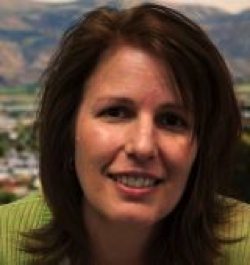
Course Description:
This course is designed as an introduction for the non-art major to basic concepts common to the visual arts and to acquaint the student with the major periods and styles of art. Painting, sculpture, and architecture from prehistoric times to Post-Modernism will be explored with particular emphasis on the art object as a form of cultural and social expression, and critical formal analysis. Field trips may be required.
Quote
"In the age of the information revolution, it is regressive not to embrace and employ the democratizing effect of free, quality, online content."
Miriam Raub Vivian, Ph.D. from California State University, Bakersfield
eTextbook: History of the Decline and Fall of the Roman Empire by E. Gibbon

Course Description:
From the last days of Rome's Republic and the establishment of the Empire under Augustus to the "Fall" of Rome in the West in the 5th cent. C.E. The nature of Augustus' settlement, problems of political stability, the crisis of the 3rd cent., recovery and collapse are explored, along with such topics as art, literature, and religion, where special attention is given to the role of Christianity in the empire. Readings by contemporary writers, documents illustrating social history, and images enhance the course.
Quote
"My main motivation was to save students money. Not only is the cost of books continually rising, but CSUB has many students who are barely able to make it financially."
Luz Elena Ramirez, Ph.D. from California State University, San Bernardino
Selected Resources: Rather than use one open textbook, I used a variety of resources that are available online for free. Stoker The Jewel of Seven Stars 1903; Browning "My Last Duchess;" Poe "Cask of Amontillado"; Shelley, "Ozymandias"; Stevenson "Olalla"; Edwards Pharaohs, Fellahs, and Explorers; James Daisy Miller.
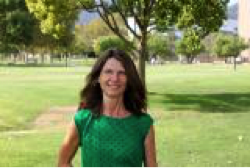
Course Description:
HUM 340 is an investigation of different ways in which people find the meaning, or meanings, in texts or events. Includes alternative theoretical approaches applied to specific literary, artistic, legal, religious and historical examples.
Quote
"My goal with the Open Textbook Adoption Program was to reduce textbook costs for students and to ensure that all students had access to course materials for our in-class discussions."
Leslie Collins from Modesto Junior College, CA
eTextbook: Stand Up, Speak Out from Saylor.org
Course Description:
Developing individual effectiveness in various speech activities; emphasis on public speaking; instruction and practice in selection, organization and presentation of materials. Development of self-confidence and listening skills. Field trips are not required.
Quote
"I still use Stand Up, Speak Out: The Practice and Ethics of Public Speaking v. 1.0.3 from Flat World Knowledge as my primary text for this class. It has been edited by me to fit the course, is interactive, has study resources, and can be purchased in a variety of formats depending on my student's learning style and their budget."
Elizabeth Harris, Ph.D. from San Jose State University
eTextbook: Chapters from Stand Up, Speak Out: The Practice and Ethics of Public Speaking from B. Attias, A. Goding, J. Wrench, and D. Johnson
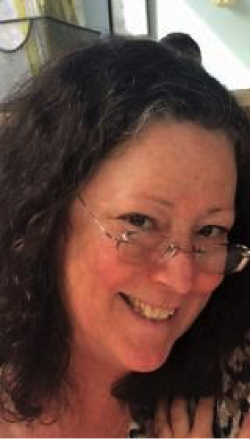
Course Description:
In this course students develop strategies for designing well-organized, researched, extemporaneous speeches on socially significant topics adapted to a diverse audience.
Quote
"The reasons I am interested in adopting this text are two-fold. The first reason, it is free. The students don't have to carry any financial burden for this text. Secondly I can deliver the two chapters to all of the students at the same time. I chose to embed the chapters in the course management shell making them available at a specified time in the semester."
Mark Stoner from California State University, Sacramento
eTextbook: Public Speaking by The Public Speaking Project

Course Description:
Theory and technique of public speaking. Emphasis on organizing, supporting, and clearly stating ideas. Practice in informative and persuasive speaking. Meets the general education requirement for oral communication, Area A-1.
Quote
"I make use of textbooks as the basic source of content and use class time for activities that apply the content and practice skills. Therefore, I felt it was imperative that students had no excuse for not reading the course text."
"Further, I appreciated the fact that I didn't feel compelled to use every chapter to justify the high cost of a typical textbook. While I did end up using all the chapters, uses came organically from the course design, not a sense of compulsion. I value OERs for the freedom of choice, usability, adaptability, accessibility and convenience they provide. "
Sabrina L. Nelson from Berkeley City College
eTextbook: Rhetoric and Composition from WikiBooks

Course Description:
Reading and writing expository prose: Critical thinking, identifying logical fallacies, and reasoning inductively and deductively.
Quote
"The major reason for adopting this textbook was to save students money, and to have the ability to customize a rhetoric text to meet the needs of my students."
Teresa Fernández-Ulloa, Ed.D. from California State University, Bakersfield
eTextbook: Acceso by Amy Rossomondo
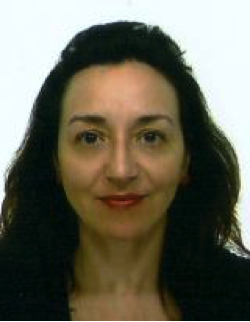
Course Description:
Spanish. Consideration of the nature of the discipline. Integration of knowledge and experience acquired within the student's major area.
Quote
"A major motivation for adopting the open textbook has been to save students money, but also to make it easy to access."
J. David Jerez-Gómez, Ph.D. from California State University, San Bernardino
eTextbook: MERLOT.org including The Maqámát , The Decameron, Lazarillo de Tormés, Exemplary Novels, and Don Quixote

Course Description:
Investigation of different ways in which people find the meaning, or meanings, in texts or events. Alternative theoretical approaches applied to specific literary, artistic, legal, religious and historical examples.
Quote
"Since many of the students are first-generation college students from working class families, and the nature of the course requires access to a variety of texts, canonical and marginal, they are often either too expensive or very difficult to find. We determined that the OER textbooks option was the most appropriate for this innovative course."
 Mathematics & Statistics
Mathematics & Statistics
Roy Shahbazian from Santa Ana College, CA
eTextbook: Precalculus: An Investigation of Functions by David Lippman and Melonie Rasmussen, Pierce Community College
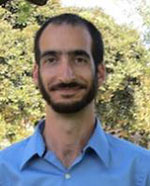
Course Description:
Advanced algebraic topics. Study of rational, trigonometric, exponential and logarithmic functions, and analytic geometry. Preparation for Mathematics 180 (Calculus). Most students taking Precalculus are science or engineering majors.
Quote
"Getting departmental permission to use a textbook different from the department norm was challenging. Gradually more faculty have started to use it. We are now in the process of forming a committee to consider a more formal recommendation for other faculty who teach the course."
Irene Duranczyk from the University of Minnesota, MN
eTextbook: Introductory Statistics by OpenStax College
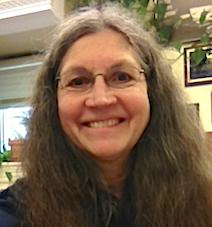
Course Description:
This project-based course is an introduction to statistics that emphasizes problem solving and decision making through the collection, analysis, and interpretation of data. Course topics include the organization and presentation of data, summary statistics, sampling methodology, sampling distributions, probability, estimation, correlation, hypothesis testing, contingency tables, and chi-square analysis. The instructional approach includes the use of small active learning groups, computer statistics software, in-depth projects, writing assignments, demonstrations, and a lot of discussion and problem solving based on practical examples.
Quote
"As a team, we took on the challenge of adapting the Collaborative Statistics text to meet our preferred order of topics, rearranged some groupings of topics, and added the technology support that we felt students needed for an exceptional experience."
Larry Green from Lake Tahoe Community College, CA
eTextbook: Introductory Statistics by OpenStax College

Course Description:
This course covers elements of probability, frequency distributions, graphs and measures of central tendency. Functions of random variables, probability distributions, sampling, hypothesis testing, confidence intervals, regression analysis and analysis of variance (ANOVA) will also be covered..
Quote
"Over the years, it had been frustrating to see the students in sticker shock when told that the textbook would cost them $150 each. It is unfair that those in the minority with adequate funds were the only ones who were able to purchase the textbook while the rest attempted to "get by" without it. When I heard about the OER option I spoke with one of the authors, Dr. Barbara Illowsky, and some of the other early adopters to realize that students can learn just as well without having to spend large sums of money. "
Barbara Illowsky from De Anza College, CA
eTextbook: Introductory Statistics by OpenStax College
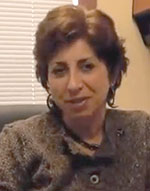
Course Description:
The course introduces the student to applications in engineering, business, economics, medicine, education, the sciences, and those pertaining to issues of contemporary interest. It covers the introduction to data analysis making use of graphical and numerical techniques to study patterns. Emphasis is on understanding variation, collecting information in the face of uncertainty, checking distributional assumptions, testing hypotheses, using probability as a tool for anticipating what the distribution of data may look like under a set of assumptions, and using appropriate statistical models to draw conclusions.
Quote
"My suggestions for faculty who are just getting started is to search for existing OER before developing your own. There are great resources already available. You might need to supplement with minimal original development."
Hasan Z. Rahim from San Jose City College
eTextbook: Introduction to Statistics from OpenStax College
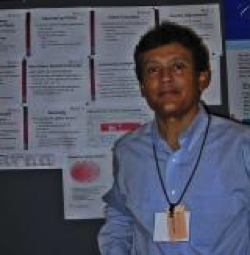
Course Description:
Students are introduced to the study of statistics. Students will learn methods of displaying data, descriptive statistics, basic concepts of probability theory, random variables, common statistical distributions, estimates and sample size, hypothesis testing, goodness-of-fit test, contingency table analysis, tests of two independent population parameters, Chi-square, ANOVA, and regression and correlation. Students will apply basic statistical concepts to data from education, business, social sciences, and natural sciences. To aid in the analysis of data, the use of computational technology will be required.
Quote
"My main motivation is to save my students money without compromising on the quality of the text."
Tami Matsumoto from College of the Redwoods
eTextbook: Chapters from College Trigonometry

Course Description:
A study of trigonometric functions, radian measure, solution of right triangles, graphs of the trigonometric functions, inverse trigonometric functions, trigonometric identities and equations, laws of sines and cosines, solution of oblique triangles, polar coordinates, complex numbers in trigonometric form, De Moivre's theorem, and conic sections. Note: A graphing calculator is required.
Quote
"In general, the primary motivation for adopting an open textbook is to save students money. Ease of access is also important, and using an online book eliminates many hurdles related to acquiring an actual book."
 Science & Technology
Science & Technology
Virginia Moran from Yuba College
eTextbook: Chapters from Concepts of Biology from OpenStax College
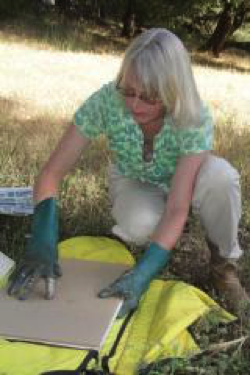
Course Description:
Ecology studies the interaction and interdependence among living organisms in their environment. The course presents fundamental scientific principles in examining how natural ecosystems function and how human actions affect natural ecosystems. Emphasis is placed on the role of science in determining causes and in contributing solutions to local and global environmental problems.
Quote
"Many of my students are low income and being able to access free quality online textbooks is going to help them immensely."
Wendy Riggs from College of the Redwoods, CA
eTextbook: Concepts of Biology by OpenStax College
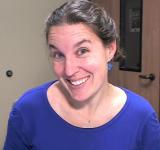
Course Description:
An introductory course in life science dealing with basic biological concepts including molecular and cell biology, metabolism, heredity, evolution, ecology, natural history, and biodiversity.
Note: This course is designed for non-science majors and nursing/health occupation students. Not open to students who have completed or who are currently enrolled in BIOL-3.
Quote
"With the arrival of Concepts of Biology, it suddenly became much easier to use OER! Once we adopted Concepts of Biology, we were able to create a customized copy of the text and order printed copies. Our bookstore was incredibly supportive of our efforts to reduce student cost."
Roxann Schroeder, Ph.D. from Humboldt State University
eTextbook: Biology from OpenStax College

Course Description:
Fundamental processes of life. Structure and function of cells, genetics, evolution, and ecology.
Quote
"The major reason I adopted this textbook was for the cost savings. When I asked my students, I found that many did not buy the book (they either borrowed it, tried to get access to the copy on reserve at the library, or did without)."
Suzanne Wakim from Butte Community College, CA
eTextbook: Introduction to Biology for the Open Learning Initiative
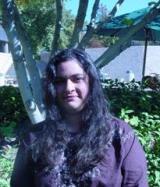
Course Description:
Students will develop an understanding of important current issues by understanding the biological principles. Biological principles include: the scientific method; biological macromolecules; cell structure and function; cell division; genetics; DNA structure and function; metabolism; evolution; and ecology. Issues covered may include: the nature of science, nutrition, stem cells, cancer, genetic diseases, cloning, genetic engineering, gene therapy, nature versus nurture, ecological diversity, invasive species, sustainability, and the role of humans in the environment.
Quote
"When I surveyed students about the traditional publisher textbook found that roughly half the students selected to buy the paper text, but many of these students ended up using both the paper text and the OER. Student commented that they appreciated the option, and I have kept these two options in my class since."
Delmar Larsen from University of California, Davis
eTextbook: UC Davis Chemwiki

Course Description:
Periodic table, stoichiometry, chemical equations, physical properties and kinetic theory of gases, atomic and molecular structure and chemical bonding. Laboratory experiments in stoichiometric relations, properties and collection of gases, atomic spectroscopy, and introductory quantitative analysis.
Quote
"We have mapped the ChemWiki curriculum to the Petrucci, Herring. Madura, et.al 10th edition as part of the NSF Grant. This mapping can help adopting faculty to understand the navigation through ChemWiki from a previously used traditional textbook."
Ron Rusay from Diablo Valley Community College, CA
eTextbook: ChemWiki Diablo Valley College

Course Description:
An introduction to the fundamentals of chemistry including the topics: atomic theory, chemical reactions, bonding, structure, stoichiometry, gases, solutions, redox, thermochemistry, equilibrium, and acid-base chemistry.
Quote
"I became involved with ChemWiki about three and half years ago during its first year of development. My interest in OER is for the pedagogical improvements that it makes possible. Students in my chemistry classes are very well-prepared to go on to the next level."
Marusa Bradac from University of California, CA
eTextbook: College Physics by OpenStax College

Course Description:
This course is physics for nonscientists, and focuses on the survey of basic principles or a deeper exploration of some particular branch. Topics include black holes, space time, and relativity; physics of music; history and philosophy; energy and the environment; and natural phenomena.
Quote
"Saving students money was the main motivation for adopting the open textbook. Also there was no specialized textbook for teaching Physics of California and this textbook had a lot of everyday examples.The open textbook was incomplete for my course but all textbooks are so I supplemented it with external materials."
Zvonko Hlousek from California State University Long Beach
eTextbook: College Physics by OpenStax College

Course Description:
Year course in introductory physics for non-majors. First semester considers properties of matter, mechanics, wave motion, and heat. Second semester considers electricity, light, and atomic and nuclear physics. Letter grade only (A-F). (Lecture 3 hrs, laboratory 3 hrs.)
Quote
"It's very simple what motivated me to adopt OER. A publisher physics textbook fully bound is $250, a loose leaf book is $150, and the e-book is $120 or more. OpenStax College Physics is free to students online so the numbers tell the story."
Leah Sharp, Ph.D. from College of Marin
eTextbook: College Physics from OpenStax College
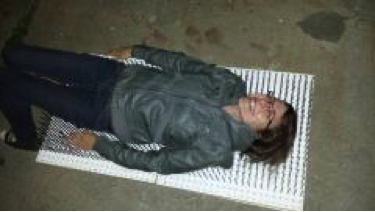
Course Description:
This course introduces topics in physics including motion, forces, energy, oscillation, waves, fluids, heat, and thermodynamics. The course emphasizes problem-solving based in algebra and trigonometry, as well as laboratory investigations and experimental techniques.
Quote
"The main motivation for adopting the open textbook was to save students money."
 Social Science
Social Science
Amber Hammons, Ph.D. from Fresno State
eTextbook: A Chapter from Attachment Through the Life Course by R. C. Fraley from Noba

Course Description:
A balanced study of basic theories, research, applications, and principles of physical, cognitive, and psychosocial development from conception to death, presented in an integrated manner in the context of the family in a diverse society. Includes behavior, sexuality, nutrition, health, stress, environmental relationships, and implications of death and dying.
Quote
"Affordability is a concern of mine but equally important is finding OER that are high quality, rigorous, and appropriate for college students."
Vera Kennedy from West Hills Community College, CA
eTextbook: Introduction to Sociology by OpenStax College

Course Description:
Soc 1 is an introduction to the sociological concepts and theoretical perspectives of sociology and their application to the fundamental problems of social life. The course includes an overview of sociological explanations, methods, and findings in social structure, group dynamics, socialization, social stratification culture, social change, and global dynamics.
Quote
"The major motivation in adopting this textbook was to save students money, without sacrificing the quality of the content. I was impressed by OpenStax, and I thought I could work with it because the quality was equivalent to published textbooks. We had to get the approval from the curriculum committee, as we all have to use the same book. We can also use the supplements, if desired."
Eric Strayer from Hartnell Community College, Salinas, CA
eTextbook: Introduction to Sociology by OpenStax College

Course Description:
A general introduction to the study of socialinteraction and the organization of modernsociety. Topics include culture; social structure; socialization; deviance and crime; class, ethnicity, and gender; social institutions; collective behavior and social movements; and demography and urbanization.
Quote
"Most of my students are low-income and work full or part-time and I would like to see them put their bucks into a laptop or tablet and have every teacher find them online free or inexpensive books. "
Heather Wylie from Shasta College, CA
eTextbook: Introduction to Sociology by OpenStax College
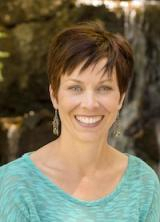
Course Description:
This course examines the basics of sociology--the study of society. Sociology examines the interactions among social institutions, cultures, groups, and individuals. This course will focus on how unequal power relations organize the social world and shape individual lives, and how individuals negotiate their lives in different social and economic contexts. The course will examine a broad array of topics using a variety of theoretical perspectives and sociological research methods. The primary goal of this course is to recognize how people's experiences are shaped by social forces and reshaped through human action. This course may be offered in a distance learning format.
Quote
"Given the high level of students living at or below the poverty line and first generation college students, I felt it was very important to increase student access to course materials. I found OpenStax through personal research into OER materials that met the needs of my courses."
Anne Marenco from College of the Canyons, Santa Clarita, CA
eTextbook: Sociology Online Text
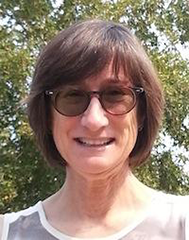
Course Description:
Examines small group interactions and cultural patterns of American and other societies using the conceptual, theoretical, and methodological principles and applications to explain how values, roles, norms, social interaction, and social inequality as well as other concepts influence individuals, groups, and society.
Quote
"Adopting the open textbook has not created any challenges other than finding the time to revise the book every two years."
MERLOT and SkillsCommons Tools

ADD Free and Open Educational Resources You're Using or Created into MERLOT
Are you using OER in your teaching or your learning? Have you created free and open teaching materials? We invite you to catalog these resources in MERLOT. Your colleagues and students around the world will thank you!
IT IS EASY!
First: Become a member of MERLOT (It will take about 2 minutes and it is FREE).
Second: Fill out the online form to contribute a Material. (It will take about 4 minutes the first time. MERLOT provides systematic instructions on our YouTube Channel and a handout (PDF).
